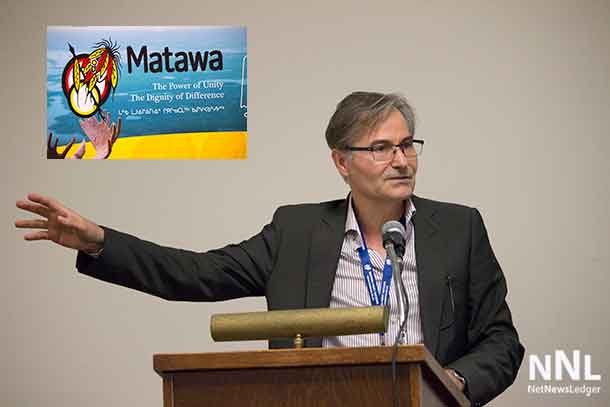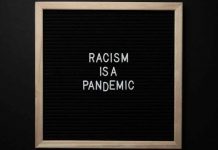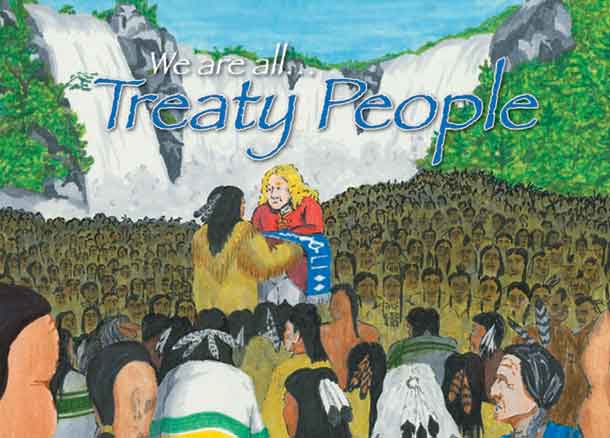
Professor Walid Chahal Talks on Racism
THUNDER BAY – Matawa First Nations see the solutions to racism as coming from coming together in consultative work to solve issues in Thunder Bay that are impacting Indigenous people across the city.
Far from pointing fingers of blame, today’s Walking in the Light sought to bring together leaders from churches, and faiths from across the city as a starting point.
At today’s symposium held after the walk, the discussion was toward finding ways to work together.
Lakehead University Professor Walid Chahal was the keynote speaker at the symposium
Here is the Keynote Address:
First, I would like to acknowledge that we are on Indigenous land, of the Fort William First Nations. I would like thank the organizers and particularly Darius Ferris, the president of Mattawa, and Carol Audit, the Communications Manager; I had meaningful conversations with both of them last week.
I appreciate the fact that the MATAWA FIRST NATIONS organized such a noteworthy event and came up with the important themes for our gathering today, which revolve around unity, peace and understanding. I believe that faith-based values, among other approaches, can definitely be part of the solutions to societal and systemic racism.
I was asked to speak on the issue of racism and to problematize it.
As a start, I would say that we certainly need to incorporate the above themes–so we can have a meaningful dialogue and work together as a community in a peaceful way—through a solid understanding of our issues and the challenges we face.
Since my talk involves a conceptual framework and because of the time constraint, I will speak in a general way so hopefully what I am going to say will make sense. Please raise questions if certain things are not clear.
We will start first with a working definition of Racism:
Racism can be defined as those ideas and ideals (ideologies) that assert or imply the assumed superiority of one social group over another, together with the institutional power to put these perceptions into practice in ways that control, exclude, or exploit those racialized as different or inferior (A. Fleras 2012. Unequal Relations—pg.76).
Although this definition is essential for analysis and evaluation, how racism occurs is not that simple and often is not visible to everyone involved–because the reality is often complex, shifting, and contextual. Hopefully, the following discussion will shed a bit of light on some of the issues.
It should be stated that we have come a long way from Canada’s racist history in which racism and racialization existed at the level of policy making, ideology and practice. With respect to Indigenous people, we know now more than ever before—through Royal Commissions on Aboriginal peoples, through the findings of numerous studies, and through the work of many Indigenous groups and agencies, including at the local level, about the intergeneration effects of this troubling colonial history.
Indigenous writers indicate that some of the colonial elements are still continuing, but at the same time, they stipulate that we have been slowly moving in the right direction by addressing and delivering on issues that are important to Aboriginal peoples.
It seems that recently, there has been more receptiveness by people and representatives of governments at the federal, provincial and municipal levels especially after the findings of the TRC. Having said that, however, many of us know that we still have a long way to go to be able to get rid of the systemic racism.
It should be emphasized that racism or racialization is quite complex especially the systemic nature of it and its links to the structural, economic, cultural, ideological factors, their historical roots, and the element of power.
Our roles, resistance, and critical reflection should be viewed within the embeddedness of the systemic and institutional, cultural, ideological forms of racism and their links to power.
Besides these structural factors that reflect dominant biases, stereotypes and assumptions, which are constructed within the binaries of us and them, superior and inferior, and good and bad, our roles should be also viewed within democratic principles and democratic ideals of justice, rights, equity and fairness and whether we are able to act on them and apply them.
Putting this in concrete terms, our thoughts, conducts, and the roles we play, whether as representatives of institutions, such as education, health, the media, the arts, the police, the law and the rest of the justice system, or, outside of these institutions, are impacted by the above sets of factors—the democratic ideals and the dominant biases and assumptions (including image formation and language)—and their links to the aforementioned binary-split of us and them, superior-inferior, good and bad.
Hopefully, most of us strive towards applying democratic ideals, while we are at the same time being confronted with other influences stemming from the biases mentioned above. Hence, our thoughts and actions do not occur in a vacuum outside of structural factors and arrangements including the good–as in democracy–and the bad–as in biases and bad assumptions that generalize about the reality or about members of ethno-cultural groups, or other social groups. Think, for instance of the stereotypes and their impact on us with respect to how we think and act–and how the stereotypes might predispose individuals to act in particular way. However, we are not necessarily passive. We play a role—but our role is usually in relation to the above—to what is around us. Although, some of us also try to change what is around us.
I would argue that critical thinking and critical reflection can help us move in the right direction and some of us are on this path. We need to look at our roles within their social setting and the social context and not as outside of them. I also argue that if we are knowledgeable and we follow the right approach that shows understanding and wisdom, we can change what is around us and achieve harmonious existence. It is definitely possible.
The portrayal of our city, our citizens and our representatives in a simplistic, reductionist and rigid way—i.e. as racist (or sexist) does not help us understand the reality with its complexities—including understanding root causes or processes of problems—and does not help us to move forward….It also overlooks the resistance and the struggles of the members of various groups including Indigenous people and their roles in fighting racism.
Additionally, repeating and reproducing stereotypes, false assumptions and perceptions about members of any group also does not help us to work together as a community.
Similarly, reproducing the dominant dichotomies of us and them and good bad, superior and inferior, which are well entrenched, will not help us to move forward either. I would argue, however, that most of the reproduction or reconstitution of these problems doe not necessarily happen directly, intentionally, or consciously.
So without good understanding of the complex reality of our issues and problems and the challenges we are facing and their root causes and historical links, we will not be able to solve anything.
I will talk a bit on the processes—in terms of what we do and how we do it, including how we apply polices and approaches. These need to be critically examined so we can deconstruct and shed light on the how, the what and why, the where, and when. Critical evaluations of these processes must also include delving deep into the intentional and unintentional as well as the conscious and unconscious aspects in order to be clear about the nature of a particular problem and to be able to respond accordingly. An example on processes: sometimes, we might have a good policy or approach that is supposed to help us to do our work in an equitable way, but the way we do it—that is the process itself might not give rise to an intended good outcome.
We need to be careful not to fall into reproducing polarizations and to make sure that what we do is not done in a confrontational way—that is we should be careful not to fall into such a trap. I would say that this is quite possible, we at Diversity Thunder Bay with the Thunder Bay Multicultural Association and the Thunder Bay Indian Friendship Centre and their members were able to work with the Thunder Police for 4 years on institutional change because we had such an understanding and it was reciprocated by the executive members of the latter.
To summarize, I would say that if we want to move forward as a community, we need to have good understanding of the complexity of our world. We need to move away from simple, reductionist, and rigid ways of viewing issues and problems. We need to also move away from the binary-split mentioned above and to make sure that we do not reproduce them. We need to also exercise a lot of critical thinking and reflection and to show wisdom in how we approach a certain issue and how we are going to tackle a particular problem. Our collective efforts and our peaceful ways, guided by the various religions and spiritual elements will hopefully lead us to the right path to be able to yield positive outcomes.




